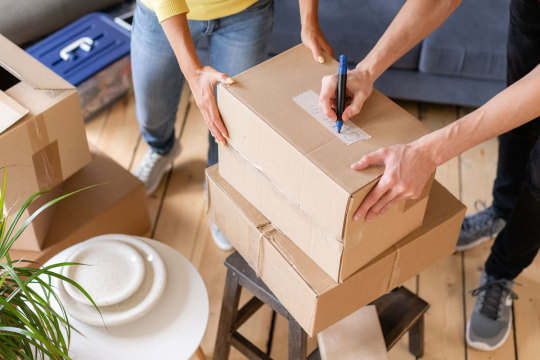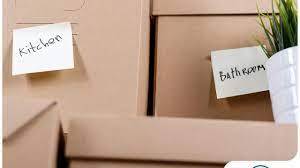Text
Tips On How To Pack Your Belongings For A Move
Moving to a new home can be exciting, but packing your belongings might seem tricky. Don't worry, with a few simple tips, you'll be a packing pro! First, gather sturdy boxes and labels. This will help you stay organized. Start with one room at a time to avoid confusion. Wrap fragile items in bubble wrap or soft towels to keep them safe. Don't forget to pack heavier items at the bottom of the boxes and lighter ones on top. Ask your parents to help you with heavy items to stay safe. Label each box with its contents and the room it belongs to. This will make unpacking a breeze. Remember, take your time, and ask for help when needed.
Gather All Of The Necessary Packing Supplies
When you're moving to a new home, it's important to gather all the necessary packing supplies. These materials will help you keep your belongings safe during the move. The packing supplies you need may vary depending on what you have to pack and how far you are moving. Here are some useful items you might want to consider:
Wardrobe boxes: These special boxes are perfect for hanging and transporting your clothes without wrinkling them. They have a metal bar to hold hangers, just like a small portable closet.
Mattress bags: If you're taking your mattresses with you, these bags will protect them from dirt, dust, and stains during the move.
Blankets or fabric moving pads: These soft and thick blankets provide extra protection to furniture, mirrors, or fragile items. They prevent scratches and damage during transportation.


Make A Packing List and Plan by Category and Room
Moving can feel like a big task, but you can avoid feeling overwhelmed by making a plan. Start about six to eight weeks before your moving date and make a packing checklist for each room in your house. Take a day or two to pack each room, so you don't put things off until the last minute. Use boxes that fit the size and weight of your items and remember to label each box with the room it belongs in. This way, you'll know if you need any extra supplies and your move will go much more smoothly. Planning ahead can save you from unnecessary stress!
Make Sure You Know What Items Movers Can Take
When moving, it's great to trust experts with heavy lifting. They can move furniture and décor with ease. However, some things should stay with you, like special household items. Let the pros handle the rest!
Potentially Hazardous Items
Some items can be dangerous during a move. Things like cleaning chemicals, propane tanks, and sharp objects should stay with you.
Valuable Personal Items
Keep your valuable belongings close. Jewelry, important documents, and sentimental items should be carried in your car.
Perishable Food Items
Food can spoil during a move. Avoid moving perishable items like fruits, vegetables, and frozen foods.
Household Pets
Your pets are family! Transport them safely with you in the car, and don't forget their food and water.
Start By Packing Your Least-Used Items
Moving to a new home can be exciting! To make it easier, start packing three weeks before moving day. Use boxes for your things. Begin with items you don't use every day, like shower products and favorite mugs. Packing them first means you won't have to search through boxes later. Stay organized and have a smooth move!
Label Each Box And Seal IT Properly
When you're getting ready to move to your new house, it's essential to pack your things carefully. Here are some easy tips for efficient packing:
Use strong packing tape to seal the boxes securely.
Place a long piece of tape across the top flaps of the box.
Repeat this on the bottom of the box to ensure it stays closed and won't collapse.
Keep your boxes in a dry, well-ventilated area to prevent the cardboard from getting wet.


For delicate items and furniture, consider using waterproof options or covers. Check the moving truck for leaks if it's raining on a moving day. When stacking boxes, put the heaviest ones at the bottom and the lightest on top to avoid tipping. Stack them like a brick wall to make them stable.
Always label each box with its contents and color-code them for each room. Add labels on more than one side, as boxes might shift during transportation. You can also number the boxes for better organization. These tips will help your move go smoothly and keep your belongings safe.
1 note
·
View note